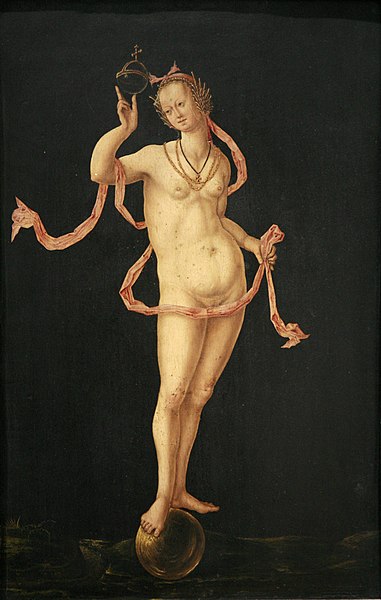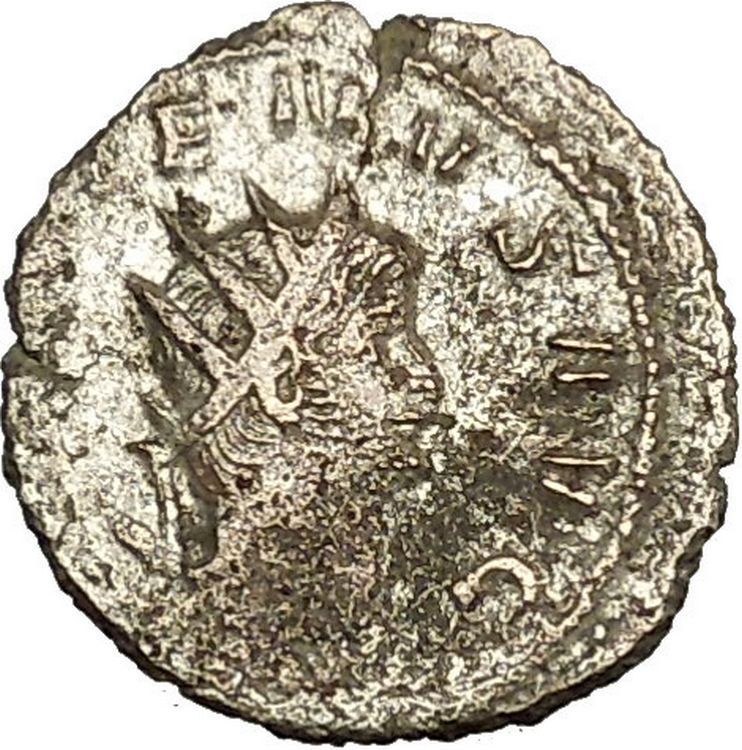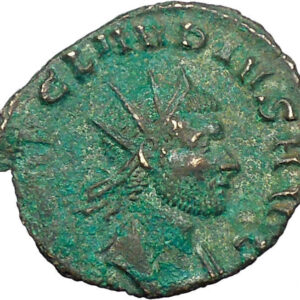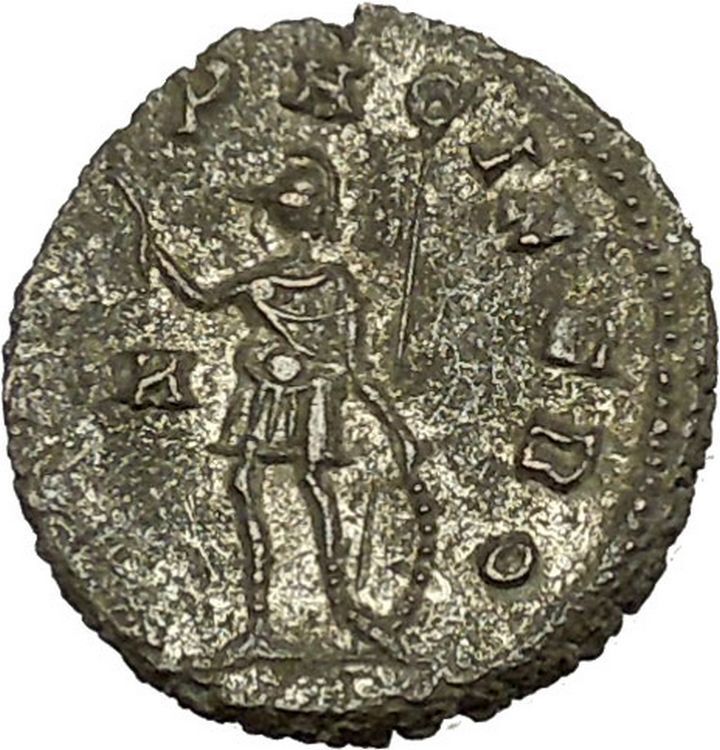|
Aelius – Roman Caesar: 136-137 A.D. –
Bronze Sestertius 32mm (26.19 grams) Rome mint: 137 A.D.
Reference: Possibly Unpublished
L AELIVS CAESAR, bare head right.
Fortuna standing with cornucopia and rudder and Spes standing holding flower
and raising dress with her left hand.
You are bidding on the exact item pictured,
provided with a Certificate of Authenticity and Lifetime Guarantee of
Authenticity.
The cornucopia (from Latin cornu copiae) or horn of plenty
is a symbol of abundance and nourishment, commonly a large horn-shaped container
overflowing with produce, flowers, nuts, other edibles, or wealth in some form.
Originating in
classical antiquity
, it has continued as a
symbol in
Western art
, and it is particularly associated
with the
Thanksgiving
holiday in
North America
.

Allegorical
depiction of the Roman
goddess
Abundantia
with a cornucopia, by
Rubens
(ca. 1630)
In Mythology
Mythology
offers multiple
explanations of the origin
of the cornucopia.
One of the best-known involves the birth and nurturance of the infant
Zeus, who had to be hidden from his devouring father
Cronus
. In a cave on
Mount Ida
on the island of
Crete
, baby Zeus was cared for and protected by
a number of divine attendants, including the goat
Amalthea
(“Nourishing Goddess”), who fed him
with her milk. The suckling future king of the gods had unusual abilities and
strength, and in playing with his nursemaid accidentally broke off one of her
horns
, which then had the divine power to
provide unending nourishment, as the foster mother had to the god.
In another myth, the cornucopia was created when
Heracles
(Roman
Hercules
) wrestled with the river god
Achelous
and wrenched off one of his horns;
river gods were sometimes depicted as horned. This version is represented in the
Achelous and Hercules
mural painting
by the
American Regionalist
artist
Thomas Hart Benton
.
The cornucopia became the attribute of several
Greek
and
Roman deities
, particularly those associated
with the harvest, prosperity, or spiritual abundance, such as personifications
of Earth (Gaia
or
Terra
); the child
Plutus
, god of riches and son of the grain
goddess Demeter
; the
nymph
Maia
; and
Fortuna
, the goddess of luck, who had the power
to grant prosperity. In
Roman Imperial cult
, abstract Roman deities who
fostered peace (pax
Romana) and prosperity were also depicted with a cornucopia,
including Abundantia
, “Abundance” personified, and
Annona
, goddess of the
grain supply to the city of Rome
.
Pluto
, the classical ruler of the underworld in
the
mystery religions
, was a giver of agricultural,
mineral and spiritual wealth, and in art often holds a cornucopia to distinguish
him from the gloomier Hades
, who holds a
drinking horn
instead.
Modern depictions
In modern depictions, the cornucopia is typically a hollow, horn-shaped
wicker basket filled with various kinds of festive
fruit
and
vegetables
. In North America, the cornucopia
has come to be associated with
Thanksgiving
and the harvest. Cornucopia is
also the name of the annual November Wine and Food celebration in
Whistler
, British Columbia, Canada. Two
cornucopias are seen in the
flag
and
state seal
of
Idaho
. The Great
Seal
of
North Carolina
depicts Liberty standing and
Plenty holding a cornucopia. The coat of arms of
Colombia
,
Panama
,
Peru and
Venezuela
, and the Coat of Arms of the State of
Victoria, Australia
, also feature the
cornucopia, symbolising prosperity.
The horn of plenty is used on body art and at Halloween, as it is a symbol of
fertility, fortune and abundance.
-
Base of a statue of
Louis XV of France
Fortuna (Latin:
Fortūna, equivalent to the
Greek
goddess
Tyche
) was the goddess of fortune and
personification
of
luck in
Roman religion
. She might bring good luck or
bad: she could be represented as veiled and blind, as in modern depictions of
Justice
, and came to represent life’s
capriciousness. She was also a goddess of
fate
: as Atrox Fortuna, she claimed the
young lives of the
princeps
Augustus
‘ grandsons
Gaius
and
Lucius
, prospective heirs to the Empire.
Her father was said to be Jupiter and like him, she could also be bountiful .
As
Annonaria
she protected grain supplies.
June 11 was sacred to her: on June 24 she was given cult at the festival of
Fors Fortuna
.
Cult

Fortuna and Pontos
Fortuna’s Roman cult was variously attributed to
Servius Tullius
– whose exceptional good
fortune suggested their sexual intimacy – and to
Ancus Marcius
. The two earliest temples
mentioned in Roman Calendars were outside the city, on the right bank of the
Tiber (in Italian
Trastevere
). The first temple dedicated to Fors
was attributed to the Etruscan Servius Tullius, while the second is known to
have been built in 293 BC as the fulfilment of a Roman promise made during later
Etruscan wars
The date of dedication of her
temples was 24 June, or Midsummer’s Day, when celebrants from Rome annually
floated to the temples downstream from the city. After undisclosed rituals they
then rowed back, garlanded and inebriated. Also Fortuna had a temple at the
Forum Boarium
. Here Fortuna was twinned with
the cult of
Mater Matuta
(the goddesses shared a festival
on 11 June), and the paired temples have been revealed in the excavation beside
the church of
Sant’Omobono
: the cults are indeed archaic in
date. Fortuna Primigenia of
Praeneste
was adopted by Romans at the end of
3rd BC in an important cult of Fortuna Publica Populi Romani (the
Official Good Luck of the Roman People) on the
Quirinalis
outside the
Porta Collina
. No temple at Rome, however,
rivalled the magnificence of the Praenestine sanctuary.

Fortuna lightly balances the
orb
of sovereignty between thumb
and finger in a Dutch painting of ca 1530
(Musée
des Beaux-Arts de Strasbourg))
Fortuna’s identity as personification of chance events was closely tied to
virtus
(strength of character). Public
officials who lacked virtues invited ill-fortune on themselves and Rome:
Sallust
uses the infamous
Catiline
as illustration – “Truly, when in the
place of work, idleness, in place of the
spirit of measure and equity
, caprice and pride
invade, fortune is changed just as with morality”.
An oracle
at the
Temple of Fortuna Primigena
in
Praeneste
used a form of divination in which a
small boy picked out one of various futures that were written on
oak
rods. Cults to Fortuna in her many forms are attested throughout the Roman
world. Dedications have been found to Fortuna Dubia (doubtful fortune),
Fortuna Brevis (fickle or wayward fortune) and Fortuna Mala (bad
fortune).
She is found in a variety of domestic and personal contexts. During the early
Empire, an amulet from the
House of Menander
in
Pompeii
links her to the Egyptian goddess
Isis, as Isis-Fortuna.[11]
She is functionally related to the God
Bonus Eventus
, who is often represented as her
counterpart: both appear on
amulets
and intaglio
engraved gems
across the Roman world.
Her name seems to derive from Vortumna (she who revolves the year).
In
ancient Roman religion
, Spes was the
goddess of
hope
. Multiple temples to Spes are known, and
inscriptions
indicate that she received private
devotion as well as state cult.
Republican Hope

Columns from the Temple of Spes in the
Forum Holitorium
were incorporated
into the
San Nicola in Carcere
church
During the
Republic
, a temple to “ancient Hope” (Spes
vetus) was supposed to have been located near the
Praenestine Gate
. It was associated with events
that occurred in the 5th century BC, but its existence as anything except
perhaps a private shrine has been doubted.
Aulus Atilius Calatinus along with
Fides
, as the result of vows (vota)
made to these goddesses during the
First Punic War
.
At Capua
in 110 BC, a temple was built to the
triad of Spes,
Fides
, and
Fortuna
.
Imperial Hope
Spes was one of the divine personifications in the
Imperial cult
of the Virtues. Spes Augusta was
Hope associated with the capacity of the
emperor
as
Augustus
to ensure blessed conditions.
Like Salus
(“Salvation, Security”),
Ops
(“Abundance, Prosperity”), and
Victoria
(“Victory”), Spes was a power that had
to come from the gods, in contrast to divine powers that resided within the
individual such as Mens
(“Intelligence”),
Virtus
(“Virtue”), and
Fides
(“Faith, Fidelity, Trustworthiness”).
Greek Elpis
The
Greek counterpart
of Spes was
Elpis
, who by contrast had no formal
cult in Greece
. The primary
myth
in which Elpis plays a role is the story
of Pandoraa
. The Greeks had ambivalent or even
negative feelings about “hope”,[10]
the concept was unimportant in the philosophical systems of the
Stoics
and
Epicureans
.
Lucius Aelius Verus Caesar (January 13, 101 – January
1, 138) became the adopted son and intended successor, of Roman Emperor
Hadrian
(January 24, 76 – July 10, 138), but never attained the throne.

Aelius
was born with the name Lucius Ceionius Commodus Verus. He was of the
gens
Ceionia. His father Lucius Ceionius Commodus Verus (according to
Augustan History was known as Lucius Aurelius or Annius) was consul
in 106 and his paternal grandfather of the same name was consul in 78. His
paternal ancestors were from Etruria
and were of consular rank. His mother
was a Roman woman called Aelia or Fundania Plautia.
Augustan History states that his maternal grandfather and his
maternal ancestors were of consular rank.
Before 130, Aelius married
Avidia Plautia, a well-connected Roman Noblewoman who was the
daughter of the Roman Senator
Gaius Avidius Nigrinus
. Plautia bore Aelius,
two sons and two daughters, who were:
-
Lucius Verus
– born as Lucius Ceionius
Commodus. He would rule as co-Roman
Emperor with
Marcus Aurelius
from 161 until his death in
169. Lucius Verus would marry Lucilla
, the second daughter of Marcus
Aurelius and Faustina the Younger
.
-
Gaius Avidius Ceionius Commodus – he is known from an
inscription found in Rome.
-
Ceionia Fabia
– she was in 136 engaged to
Marcus Aurelius. In 138, when Marcus Aurelius was adopted by Roman Emperor
Antoninus Pius, Aurelius ended his engagement to Fabia. Aurelius
became engaged to Antoninus Pius’ daughter
Faustina the Younger
, whom he later
married.
-
Ceionia Plautia
Aelius was adopted by an aging and ailing Hadrian in 136 and
named successor to the throne, although he had no military experience; he had
served as a
senator
. He had powerful political connections,
but was in poor health. His tastes were luxurious and his life extravagant. He
is said to have had Ovid
‘s erotic poetry and “a book about
Apicius
” (presumably
Apion‘s
On the Luxury of Apicius) as bedside reading, and to have personally
invented the luxury dish
tetrapharmacum.
Aelius himself was never to become emperor, dying shortly
before Hadrian. After Aelius’ death, Hadrian adopted
Antoninus Pius (September 19, 86 – March 7, 161) on the condition
that Antoninus Pius adopt the younger Lucius Verus and Hadrian’s great-nephew by
marriage, Marcus Aurelius
(April 26, 121 – March 17,
180). Marcus Aurelius later co-ruled with Lucius Verus as joint Roman Emperors,
until Lucius Verus died in 169. After Marcus Aurelius was sole ruler until his
own death in 180. Aelius is a major character in
Marguerite Yourcenar
‘s
Memoirs of Hadrian.
|













